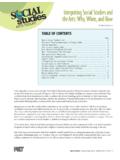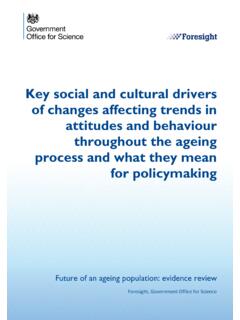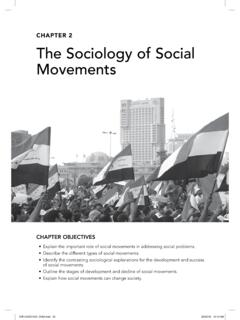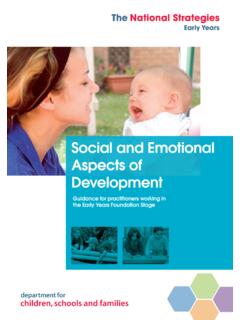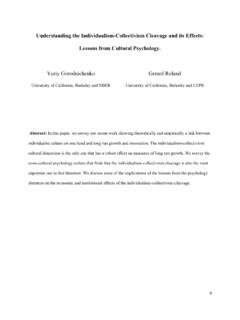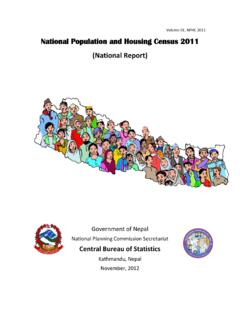Transcription of Best Practices in Creating and Delivering LGBTQ Cultural ...
1 Best Practices in Creating and DeliveringLGBTQ Cultural Competency Trainingsfor Health and Social Service Agencies32 Contents1 Introduction 32 Defining Cultural Competency 53 Goals of LGBTQ Cultural Competency Training 7 Goals vs Objectives 7 SMART Concept 84 Preparing for a Training 10 Professional Use of Self 10 Applying Appropriate Theories of Change 11 Knowing the Audience and Setting 12 Making Use of the Range of Experience with LGBTQ Issues in a Group 13 Some Challenges of this Material for Adult Learners 13 Working with Difficult Participants in a Training 135 Training Components 15 Core Topics 16 196 Training Methods 20 Lecture with PowerPoint Slides 21 Guest Speaker(s)/Panel Discussion 23 Media 23 Interactive Participation 24 Print Materials and Learning Aids 25 Web-based Learning 257 Training Evaluation 26 Kirkpatrick Model (Pyramid)
2 Of Evaluation 27 Evaluation Planning Chart 29-308 Resources and Examples 31 General LGBTQ Health Resources for Updating Curricula 31 Improving the LGBTQ -friendliness of a Health Facility 31 Media Trainings 32 Guidelines for Creating Good PowerPoint Presentations 32 Resources for Anti-oppression Trainings 32 Accessibility 32 Evaluation 329 Evaluation Appendix 32L GBTQ Cultural competency training is widely used and highly recommended for staff working in healthcare settings and social service organizations. Indeed, the federal Department of Health and Human Services encourages new and existing human services programs to include LGBTQ Cultural competency curricula, as the lack of culturally competent providers is a significant barrier to quality health care for many LGBTQ people, particularly those who identify as transgender.
3 1 Funding for this project from the AIDS Institute of the NY State Department of Health reflects a similar IntroductionIs an increase in knowledge about this population enough?Can attitudes about LGBTQ people be changed through Cultural competency training?Are modifications in the ways LGBTQ people are treated by providers, , behavior change, the only change that matters?What personal and institutional changes are needed to reduce LGBTQ health disparities and increase access to care?1 Depar tment of Health and Human Services ( DOHHS). (2012). Depar tment of Health and Human Services recommended actions to improve the health and well-being of lesbian, gay, bisexual and transgender communities. Retrieved from there is broad agreement that LGBTQ Cultural competency training is valuable, there is no standardized definition of what Cultural competency training should entail for a culturally competent provider of health and human services.
4 There cannot be a permanent standard of Cultural competency, as communities, language and policies shift over time and the requirements for culturally competent care may differ, based on job responsibilities. Despite the inevitability of change, we need to create current standards for culturally competent care, even as we understand the limitations of such a designation. Written by the National LGBT Cancer Network: Liz Margolies, Rej Joo and Jenna by a grant from the New York State Department of Health, AIDS image: Rainbow by elray Por ter, K. E., & Krinsky, L. (2014). Do LGBT Aging Trainings Effectuate Positive Change in Mainstream Elder Service Providers?. Journal of homosexuality, 61(1), 197-216 .3 Empire State Pride Agenda. (2011) New york state LGBT health and human services network.
5 Retrieved from Cross, T., Bazron, B., Dennis, K., & Isaacs, M. (1989). Towards a culturally competent system of care. Volume I. Washington, DC: Georgetown University Child Development Center, CASSP Technical Assistance Beach, , Price, , & Gary, (2005). Cultural competence: a systematic review of health care provider educational interventions. Medical Care, (43), 356 373. 6 The Joint Commission. (2011). Advancing effective communication, Cultural competence, and patient- and family-centered care for the lesbian, gay, bisexual, and transgender (LGBT) community. Retrieved from Tervalon, M. & Murray-Garcia, J. (1998) Cultural humility versus Cultural competence: A critical distinction in defining physician-training outcomes in multicultural education. Journal of Health Care for the Poor and Underserved, 9(2), competency training has been popularized and widely used across diverse fields including the healthcare sector, academic institutions and government and social service agencies.
6 The term has been used interchangeably with diversity education, Cultural sensitivity training and multi- Cultural workshops. Cultural competency is commonly understood as a set of congruent behaviors, knowledge, attitudes and policies that enable effective work in cross- Cultural Cultural competency training, therefore, aims to increase knowledge and skills to improve one s ability to effectively interact with different Cultural LGBTQ Cultural competency training has been developed and implemented to improve healthcare and social service delivery to LGBTQ patients and clients and, therefore, decrease LGBTQ health disparities. Some of these barriers to care include refusal of care, delayed and/or substandard care and lack of inclusion in health outreach or education on risks that affect LGBTQ people.
7 LGBTQ Cultural competency training has been supported and recommended by multiple federal agencies, including the Joint Some people have argued that Cultural competency trainings are too focused on a prescriptive way of teaching culture, challenging the implicit assumption that culture is a discrete body of knowledge that can be learned in one setting. Cultural norms and language are constantly changing, and there are large individual variabilities within LGBTQ communities. The intersectionalities of people s identities ( , race, ability and sexual orientation) resist a narrow definition of culture. Cultural Humility is an approach to Cultural competency trainings that proposes change through a lifelong process of learning, including self-examination and refinement of one s own awareness, knowledge, behavior and attitudes on the interplay of power, privilege and social Across the country, curricula have been developed with one or more of these goals in mind, but without grounding in evidence-based research.
8 Various individuals and agencies have created their own set of slides, lectures, handouts, group exercises and evaluation tools. Having analyzed approximately two dozen separate Cultural competency training curricula, we have found that there is a striking similarity between them all in terms of content, suggesting that exposure to previous trainings, either in person or online, has guided new developments. Or, perhaps there is unstated national concurrence on the shape of the wheel each agency has independently on the effectiveness of LGBTQ -specific Cultural competency training is extremely limited and mostly addresses changes in providers. This does not necessarily translate into better health outcomes for LGBTQ Some intended changes, , increase in knowledge about LGBTQ terms, can be more easily measured using pre- and post-test surveys.
9 Others, like changes in provider behavior when working with LGBTQ patients or clients, are more difficult and expensive to gauge. In the absence of solid outcome data, how do we measure and define best Practices in LGBTQ Cultural competency trainings? Two separate foundations ground this manual. First, we use well-established theories of how adults learn and change, as we delineate the steps in constructing a , we rely on community wisdom and manual reflects the collected years of LGBTQ Cultural competency training of over 60 different organizations and individuals, especially those in the New York State LGBTQ Health and Human Services Network who provided an estimated 2,500 LGBTQ Cultural competency trainings in This manual does not contain a training curriculum, but is instead intended to be a guide for those who plan to create and deliver LGBTQ Cultural competency trainings to health and human service providers.
10 It was created as a technical assistance tool for LGBT health and human service providers in New York State, but it may also be of benefit to anyone beginning the work of LGBTQ Cultural competence training across a wide range of agencies, organizations, schools and manual offers a conceptual framework that coordinates learning theory, training skills, content and evaluation. The manual is also useful for assessing existing curricula and for guidance when making routine updates. All sections are interrelated, and it is recommended that the manual be read in its entirety. The design is intended to make it simple for later reference to the information, as Defining Cultural Competency76 3 The Goals of LGBTQ Cultural Competency TrainingM ost Cultural competency trainings share similar goals: to bring about positive, LGBTQ -affirming change in the participants knowledge, attitude and behavior towards LGBTQ patients and clients.

